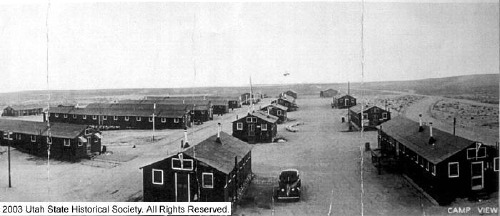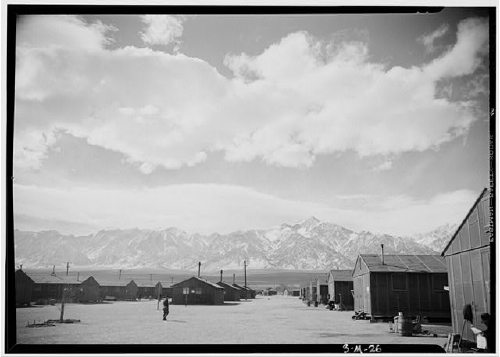
Another thing that caught me off guard looking through piles of photos from the Civilian Conservation Corps, was the camps. My interest in the CCC didn’t come from the New Depression unfolding around us, but from learning over Christmas that while he was in the CCC, my grandfather helped build the Topaz Relocation Center, the Utah internment camp in which Japanese-Americans were interned during WWII.
That Japanese Americans were forced to live in “tar paper-covered shacks” of military design set up in remote, harsh locations is unrefutable evidence of the camps’ punitive, prison-like conditions and an integral element of the entire internment camp narrative.
But what I didn’t realize was that is exactly how participants in the CCC lived, too. The image above, cropped from the official photo of Callao Camp in Juab County, just north of Topaz.
Compare it to Ansel Adams’ photo of the barracks at Manzanar below, from the Library of Congress:

Of course, it doesn’t minimize the injustice of being forced to abandon your home and possessions, then being imprisoned in the desert by your own government because of your race. But–and I know it’s hard to have a “but” after a sentence like that–but I have to imagine that the seven-plus-year history of the CCC, along with the experience of millions of Americans who participated in it, along with the Depression itself, had a formative influence on how the internment camps were perceived at the time.
What would public reaction be today if thousands of Pakistani-Americans were ordered to report to a fenced-off city made of FEMA trailers? Would we be outraged at the outrageous violation of their constitutional and human rights, or would we say, in the wake of Katrina, Ike, and waves of foreclosures, “Hey, what’s the big deal? It’s not a prison”?
Skip to content
the making of, by greg allen
